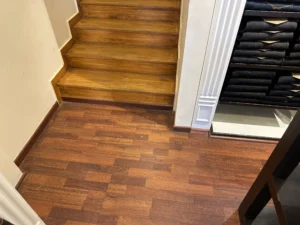Which Type of Wooden Flooring is Best?
Wooden flooring adds warmth, character, and timeless beauty to any space, making it a popular choice for homeowners and designers alike. However, with various types of wooden flooring available in the market, choosing the right one can be daunting. This article will guide you through the different types of wooden flooring and help you determine which one is the best fit for your home.
Solid Hardwood Flooring
Pros: Solid hardwood flooring is exactly what it sounds like: planks of solid wood throughout. It’s known for its durability and longevity, often lasting the lifetime of a home with proper care. Hardwood floors can be sanded and refinished multiple times, making it easy to remove scratches and dents. The natural grains and colors of hardwood add an unparalleled elegance to spaces.
Cons: The main drawback is its susceptibility to moisture and temperature changes, which can cause warping or splitting. Therefore, it’s not recommended for basements or bathrooms. Hardwood flooring can also be more expensive and requires professional installation.
Engineered Wood Flooring
Pros: Engineered wood flooring consists of a thin layer of hardwood attached to a base of high-quality plywood, making it more stable than solid hardwood. This stability allows it to withstand moisture and temperature variations better, making it suitable for all levels of a home, including basements. It still offers the beautiful appearance of real wood and can sometimes be refinished, depending on the thickness of the top layer.
Cons: While engineered wood is more stable, it can’t be refinished as many times as solid hardwood, if at all, limiting its lifespan compared to solid hardwood floors.
Laminate Wood Flooring
Pros: Laminate flooring isn’t made of wood but mimics the appearance of hardwood through a photographic layer under a clear protective layer. It’s significantly cheaper than real wood and offers exceptional durability and resistance to scratches, making it ideal for high-traffic areas or homes with pets and children.
Cons: The main disadvantage of laminate is that it can’t be sanded or refinished. Once it’s worn out or damaged, it needs to be replaced. Additionally, it doesn’t feel or sound like real wood underfoot, which might be a deal-breaker for some.
Bamboo Flooring
Pros: Often included in the wood flooring category, bamboo flooring is made from the bamboo plant, making it a more sustainable option. It’s strong, durable, and resistant to moisture and insects. Bamboo flooring comes in a variety of styles and can be refinished, depending on the type.
Cons: The quality of bamboo flooring can vary significantly, and cheaper options may be prone to scratches and dents. It’s also susceptible to discoloration from sunlight.
Cork Flooring
Pros: Like bamboo, cork is an eco-friendly option that provides a unique look and feels underfoot. It’s naturally resistant to mold, mildew, and termites, and it has excellent insulating properties. Cork can also be refinished to some extent.
Cons: Cork flooring is susceptible to damage from heavy furniture and sharp objects. It also fades in direct sunlight and can absorb water if not properly sealed.
Conclusion
The best type of wooden flooring depends on your specific needs, budget, and the conditions of your home. For timeless elegance and the possibility of multiple refinishing, solid hardwood is unmatched. Engineered wood offers a good compromise between stability and the authentic wood look. Laminate flooring is best for those on a budget or with high-traffic homes. Bamboo and cork offer unique, eco-friendly alternatives with their own set of benefits and considerations.
Ultimately, the choice comes down to personal preference, the intended use of the room, and how much you’re willing to invest initially and over time in maintenance and care.

